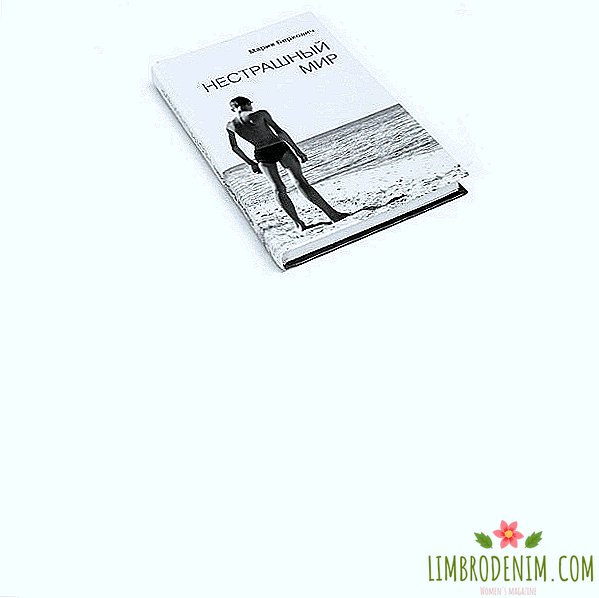How to love vulgarity in fashion
text: Rita Zubatova
International press often associates British fashion with the houses of Burberry Prorsum and Vivienne Westwood, and the selection of trends from London includes only tartan, tweed and trench coats. Meanwhile, it is becoming increasingly difficult to meet elegant guys in three-piece suits and girls in fitted raincoats on the streets of the city. Critics, buyers and photographers come here to look at fashionistas who are not afraid to look ridiculous, and designers who like to experiment. Ashish sews sports suits from sequins with pearls, Nasir Mazhar releases ghetto princesses on the catwalk, and Meadham Kirchhoff arranges an extravaganza of glitter, lace and hearts at the Tate Modern show. Why the Russian soul perceives all this abundance with difficulty, says Rita Zubatova, a journalist and a buyer of the Kuznetsky Most 20 store.

During London Fashion Week, Glamor Russia magazine publishes on Facebook a gallery: "Complete Madness: Ashish Fall-Winter 2014". Readers in the comments: "Fu", "collective farm", "clowns". Critics at the shows: "Princess", "chic", "wow." Who is right?
The twenty first century replaced the twentieth. Then you wore a sheath dress in a flower - and suddenly changed into a square jumpsuit. Still wearing a dress - it means unfashionable. Now there are two women dressed in the style of the 1950s and 1960s: one in Dolce & Gabbana, the other in Moschino - they are just glad that they didn’t choose the same thing. The industry will offer them so many options that each will find a niche from which to drag things into the wardrobe is nice. Do you want a dress in lace? Jason Wu. Do you want an origami coat? Comme des Garçons. Want a tech jacket? Nike, please. Mix to infinity, originality is welcome.

You go to Sweden for the laconic things from COS, because you want to forget about Lurex blouses

The first thing that you learn when looking at comments on fashion sites is that our compatriots are frightened by originality. And not because we live in "the USSR, in which there is no fashion," but because we are afraid to live in panic. The rhetoric is simple - we do not exist in an aesthetically sterile European society to get tired and love ugly design in all its manifestations. While in foreign supermarkets you want to buy everything at once, because, excuse me, the packaging is beautiful, in the Russian grocery store you reach behind the berry basket because you remember - it is wildly tasty, although it looks shameful. Port magazine looks like a progressive one in Moscow, when in London it is one of dozens of pleasant publications with a clean layout. You go to Sweden for the laconic things from COS, because you want to forget about the Lurex blouses, tight all that God gave, and shoes, worn with bodily (actually almost orange) stockings. Of course, Ashish dress, which is easy to present on the heroine of "Sweet Sixteen", and Sibling knitwear with flowers knitted on it evokes emotions in you that are far from the feelings of the British. Take them off the models and put them on the middle classmate - and here are those fragments of Russians of the 2000s that you didn’t want to remember, vividly appear in your imagination.



In fact, LFW guests will understand what they are talking about, and you start a heart-to-heart conversation with them. The point is not that the 2000s looked refined for them, but that the previous years had formed a kind of aesthetic immunity. Cowards, getting out from under jeans, and tops with huge logos, pass as a logical fun-stage and come back with an incredible hype for young people, who now perceive them with irony. And the point is not that they think so, because they themselves look like Christmas trees and do not appreciate minimalism - here, as stated above, to each his own. The question is in perception: the explosively dressed singer Mademoiselle Julia and the sophisticated fashion consultant Yasmin Sewell can come to the show of Nazira Mazhar - and both will discuss how deftly the designer plays at the junction with vulgarity, and here TLC.
How to learn to perceive the difficult British fashion? Clear the head of prejudice and read more. He broadened his mind - and realized that J. W. Anderson, with his dresses for men, made a breakthrough no less than Yves Saint Laurent with tuxedos for women. Whether you like them or not (I, for example, do not), but closing your eyes to the stage means not seeing the whole picture. Even if you really miss what Hannah MacGibbon did at Chloé, and you pray to Francisco Costa's latest collection for Calvin Klein (minimalist to the bone, in general), you invariably melt into a fabulous Meadham Kirchhoff show. You sit in the Tate Modern hall, hung with gigantic hearts and golden rain, and girls with streetcasting in flying dresses and massive shoes (ugly and charming at the same time) pass through the gate, resembling a casket. Think hell in lace? Write a comment.
PHOTO: Getty Images / Fotobank




